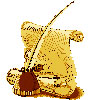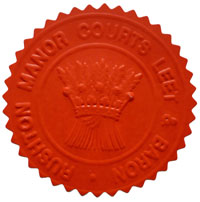Rushton Manor
Courts Leet & Baron
Two additional Trustees (Jurors of the Manor) are required to assist in the completion of an application for Charitable Incorporated Organisation status. The Charity provides funding for any initiative which might benefit the ancient manors of Rushton James and Rushton Spencer which now form the civil parish of Rushton in the Staffordshire Moorlands.
The Court will raise funds for the Charity by hosting social functions at the conclusion of two annual Court sittings.
12. Jurors (Trustees)
(i) Historically, membership of the Court has been open to Freeholders of the Manor of Rushton or such Members of the Jury whose main living or occupation was gained from working within the Manor of Rushton. For the purpose of encouraging new Jurors and for the Court to ensure that there is always a healthy number of Jurors ready and willing to take their turn to be elected as Reeve and Bailiff, new entrants will henceforth be selected from candidates who are resident within the Parish of Rushton or who have demonstrated, by dint of their past or current occupations, calling or activities, within the Parish of Rushton, that they are fit and proper persons to be elected as Jurors of the Court.
(ii) Evidence of such occupation, calling and activities should demonstrate a singular and sincere commitment to the Parish of Rushton, its traditions, history and future.
(iii) The Court may also give careful consideration to suitable candidates who, whilst not able to meet the above criteria set out in sub-paragraph (i) above and whilst being able to satisfy the criteria in sub-paragraph (ii) above can demonstrate to the Court that such an individual would bring self-evident benefit and advantage to its proceedings - provided always that such candidate can reasonably undertake all normal duties and commitments asked of him including (but without limitation) the election to Reeve and Bailiff when called upon to do so.
(iv) All such recommendations will be submitted to the Bailiff who will be assisted in his deliberations by the Inner Court whose findings will then be submitted for adoption and acceptance by all Members of the Court. The chosen candidate will be formally proposed and seconded in open Court and voted upon by simple majority (and in the case of a tie the Bailiff will have the casting vote) and thereafter be presented to the next following Court for swearing in as Juror.
If you meet the above criteria and wish to become a Juryman or Trustee of the Rushton Manor Courts Leet and Baron please fill in the application form.
Membership Application Form
The court leet was a historical court in England and Wales. At a very early time in medieval England the Lord of the Manor exercised or claimed certain jurisdictional franchises. The most important of these was the "view of frankpledge" and its associated police jurisdiction. Some time in the later Middle Ages the court baron, when exercising these powers, gained the name of leet, and, later, of court leet. The quo warranto proceedings of Edward I established a sharp distinction between the court baron, exercising strictly manorial rights, and the court leet, depending for its jurisdiction upon royal franchise.
The court leet was a court of record, and its duty was not only to view the pledges but to try by jury, and punish, all crimes committed within the jurisdiction. The steward of the court acted as judge, presiding wholly in a judicial character, the ministerial acts being executed by the bailiff.
The court leet began to decline in the fourteenth century, being superseded by the more modern magistrates' courts, but in many cases courts leet operated until nearly the middle of the nineteenth century. The courts leet survived for formal purposes until their legal jurisdiction was abolished in 1977. Although they lost their legal jurisdiction, the courts were never formally abolished The Act stated that "Any such court may continue to sit and transact such other business, if any, as was customary for it" and Schedule 4 to the Act specified the business which was to be considered customary, which included the taking of presentments relating to matters of local concern and in some cases the management of common land. Courts may still be found in ceremonial use, for example at Laxton, Bromsgrove, Henley in Arden and of course here in Rushton.


